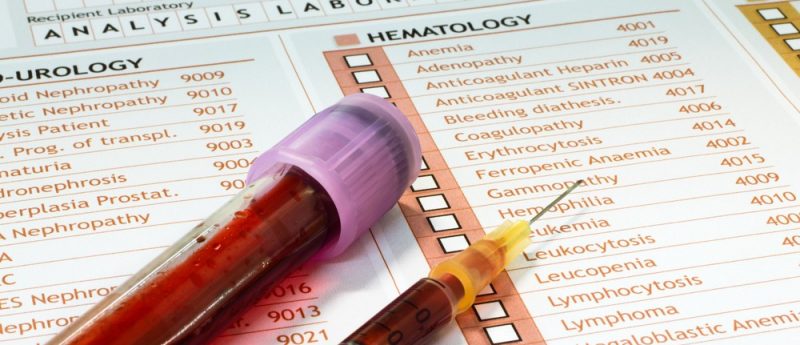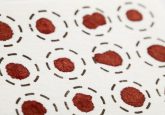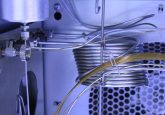Paper-based assay technology design could aid cheaper and easier point-of-care diagnosis

Researchers at Purdue University (IN, USA) have designed a paper-based assay capable of detecting biomarkers and identifying diseases through electrochemical analyses. The device is simply powered by the operator touching, rubbing or applying pressure and the colour coded results can easily be interpreted by non-medical experts.
The device, named the self-powered, paper-based electrochemical device (SPED) is designed for highly sensitive point-of-care diagnostics where access to more sophisticated medical equipment and clinically trained staff may be limited. “SPEDs are inexpensive, lightweight, flexible and easy to use,” commented Ramses Martinez (Purdue University).
Results from testing pinpricks of blood on the device were published in Advanced Materials Technologies. SPEDs also have ‘self-pipetting test zones’ capable of being utilized by dipping the device into a sample instead of using a fingerprick test.
SPEDs are made up of two layers. The top consists of hydrophobic domains on untreated cellulose paper, forming microfluidic channels for the absorption of blood from samples. The team designed a machine-vision diagnostic application in order to automatically identify and quantify results from each colorimetric test through digital imaging. Images taken from cell phones can be utilized in rapid, mobile diagnosis, and used in cases of remote expert consultation.
The bottom or second layers are triboelectric generators (TEG), powering the SPED by generating an electric current when the operator rubs or applies pressure to the device. Diagnostics can also be automated by plugging in a specially designed potentiostat, allowing tests to be run by non-clinically trained users. The battery required by the potentiostat can also be powered or charged by the TEG.
Martinez remarked, “You could consider this a portable laboratory that is just completely made out of paper, is inexpensive and can be disposed of through incineration.We hope these devices will serve untrained people located in remote villages or military bases to test for a variety of diseases without requiring any source of electricity, clean water, or additional equipment.”
As SPEDs have been used to detect and measure biomarkers such as glucose, uric acid and L-lactate, ketones, and white blood cells, current applications of this technology involve the detection and monitoring of factors related to liver and kidney function, malnutrition and anemia. Increased layers in developed version of SPEDs could allow for the detection and monitoring of biomarkers for infectious diseases in remote areas such as HIV, dengue fever, yellow fever, malaria and hepatitis.
Martinez stated: “To our knowledge, this work reports the first self-powered, paper-based devices capable of performing rapid, accurate, and sensitive electrochemical assays in combination with a low-cost, portable potentiostat that can be recharged using a paper-based TEG.”
Sources: Pal A, Cuellar HE, Kuang R, Caurin HFN, Goswami D, Martinez RV. Self-powered, paper-based electrochemical devices for sensitive point-of-care testing. Adv. Mater. Technol. doi:10.1002/admt.201700130 (2017); https://phys.org/news/2017-08-self-powered-paper-based-speds-medical-diagnostic-tools.html






